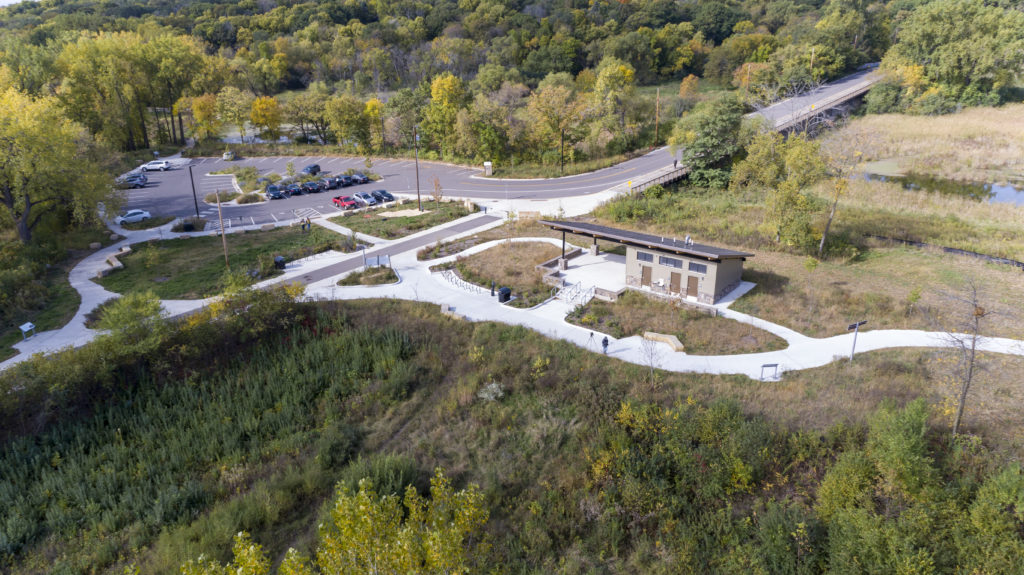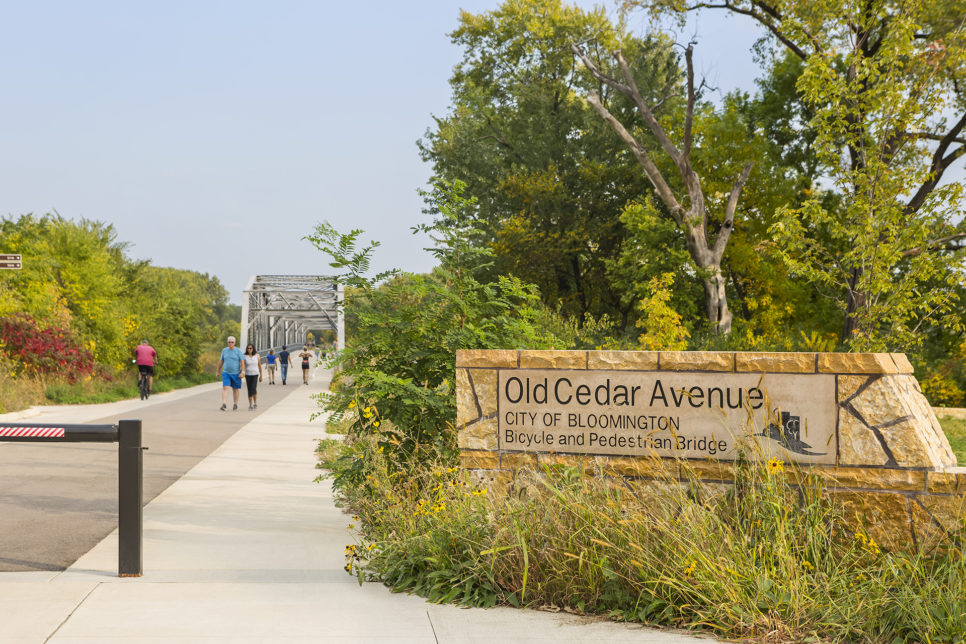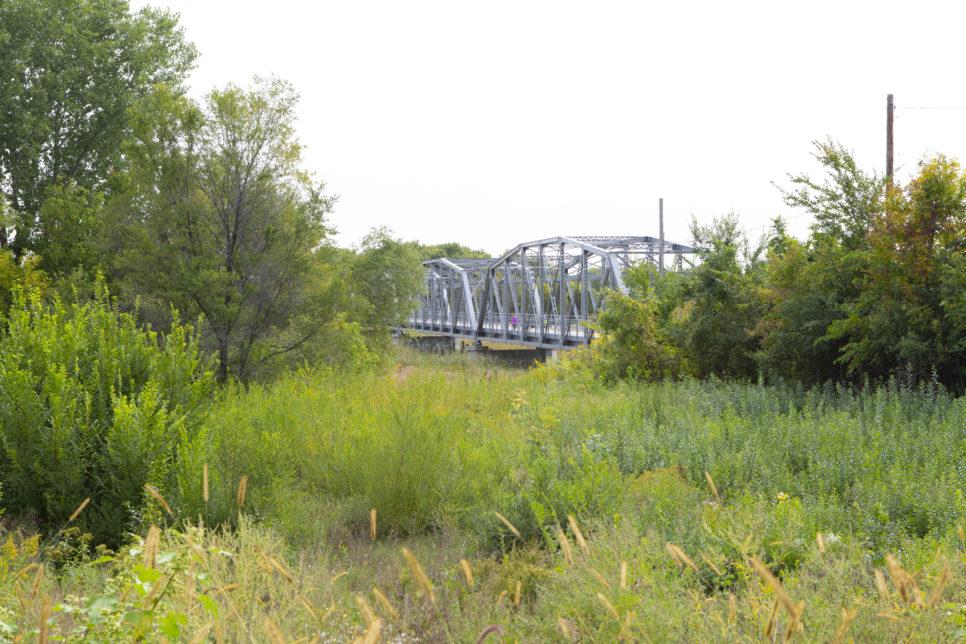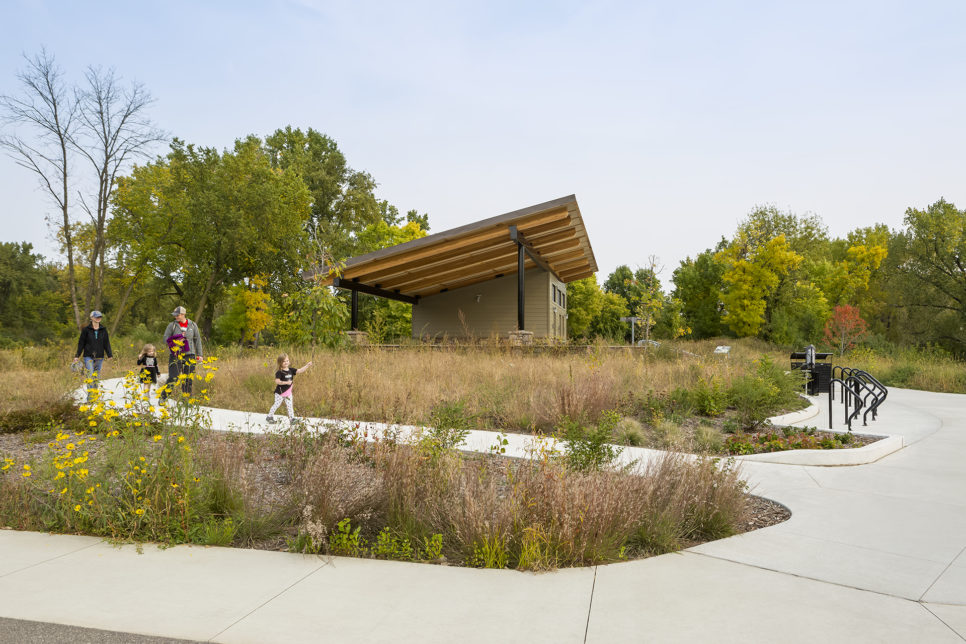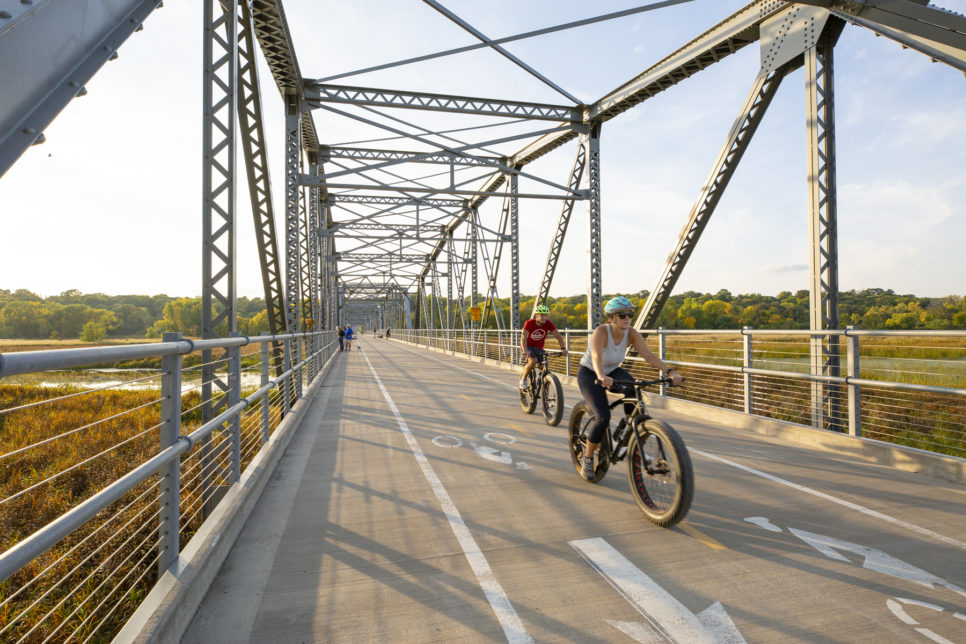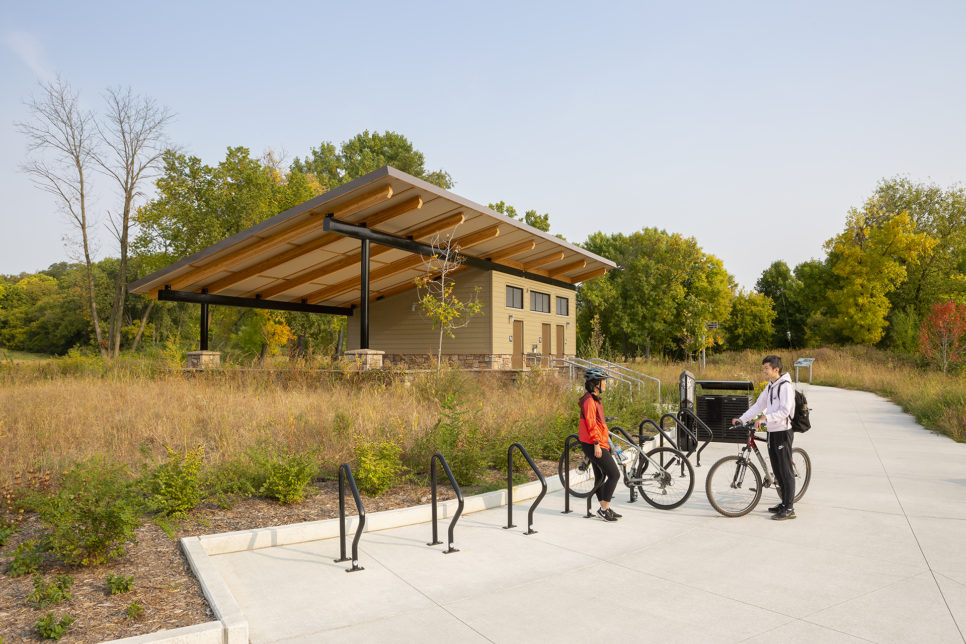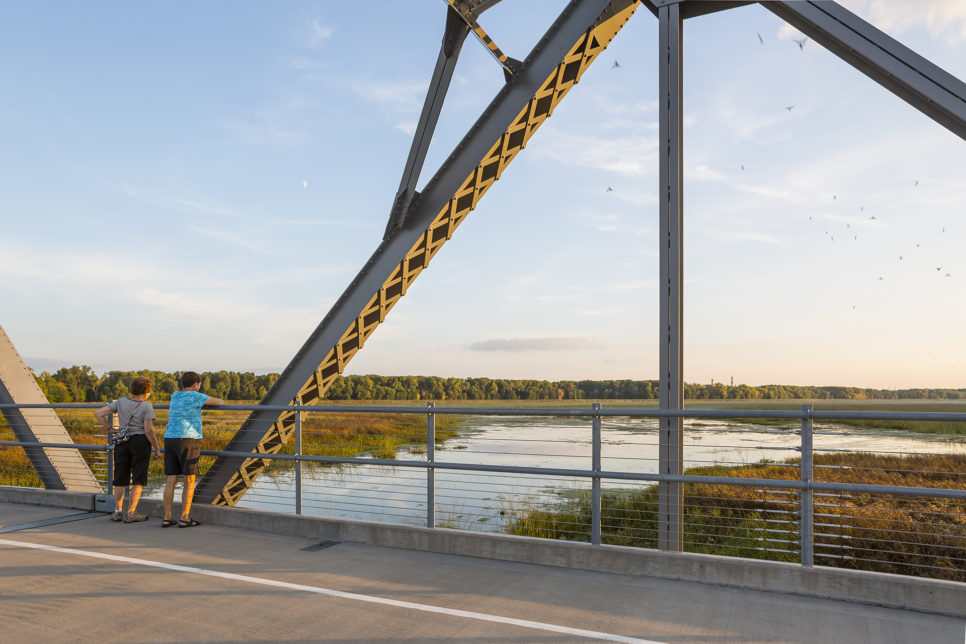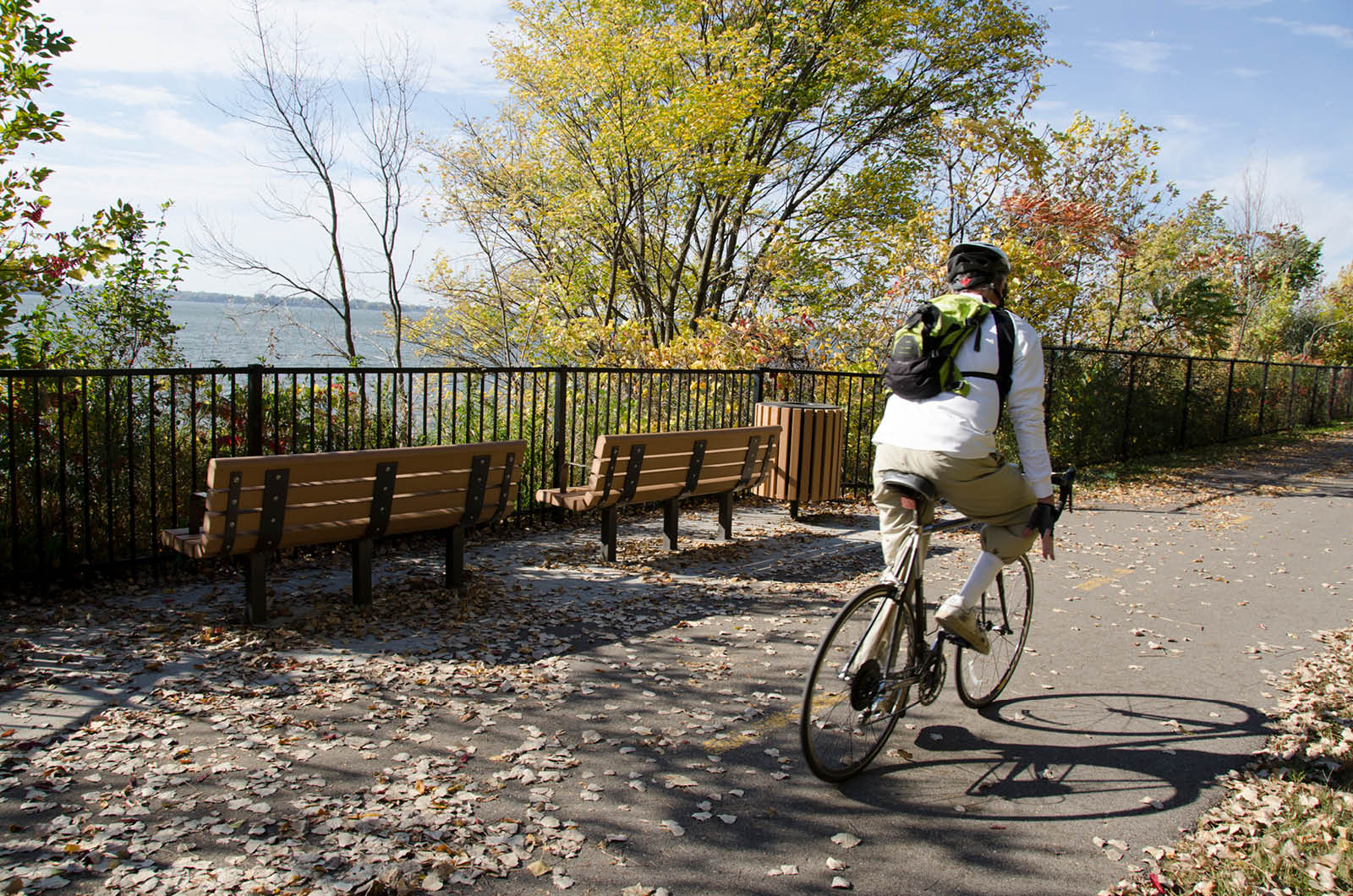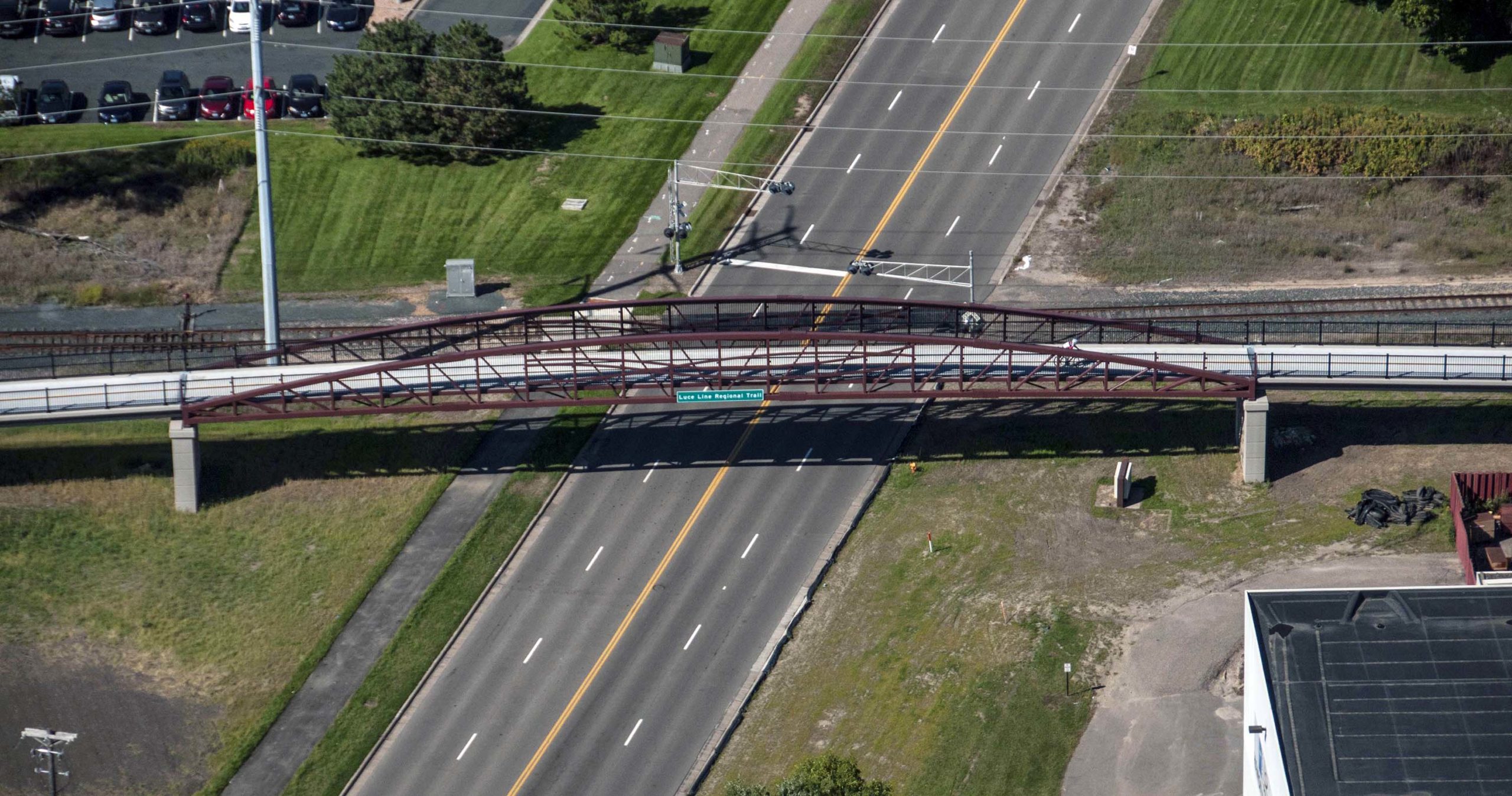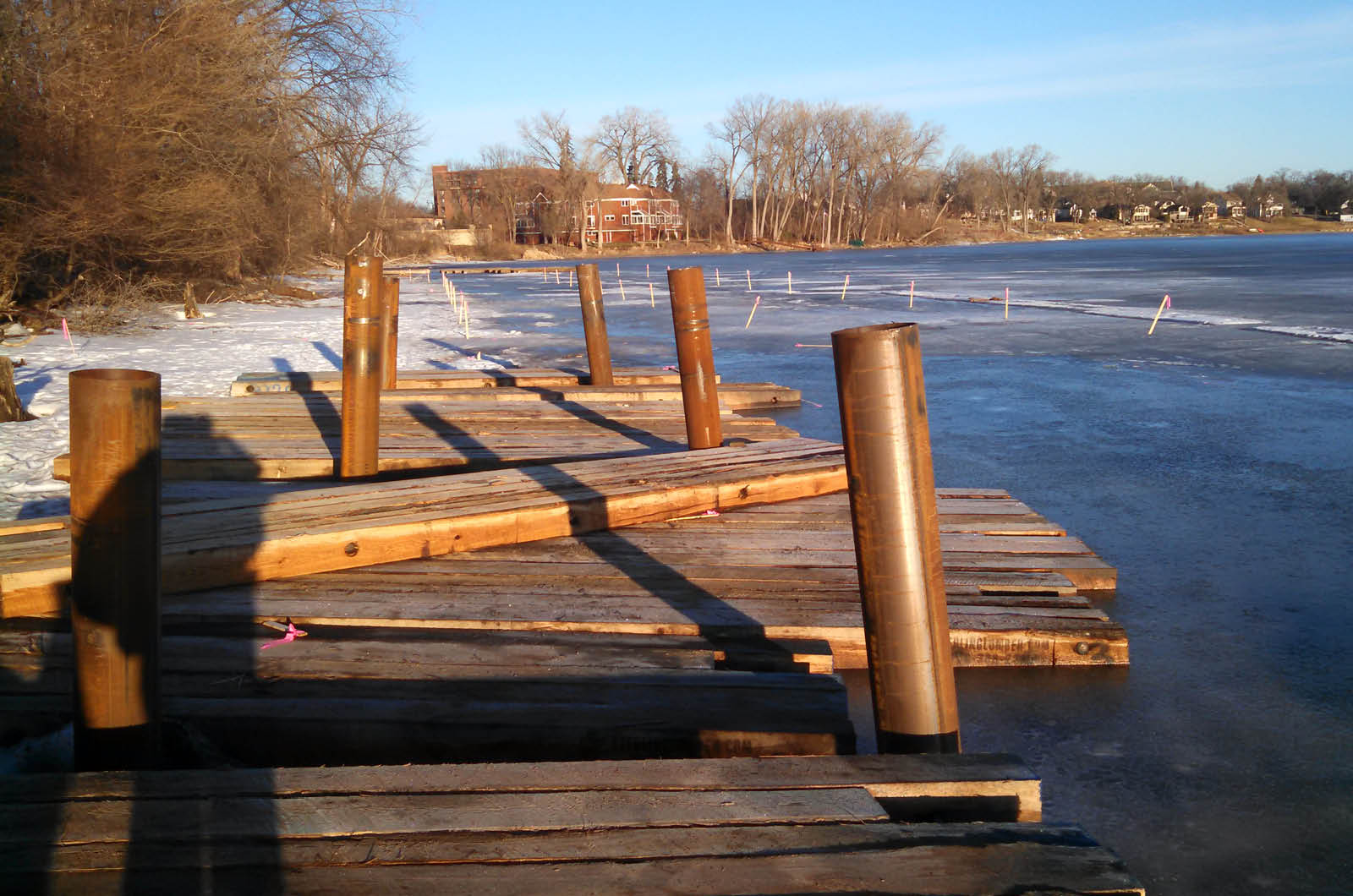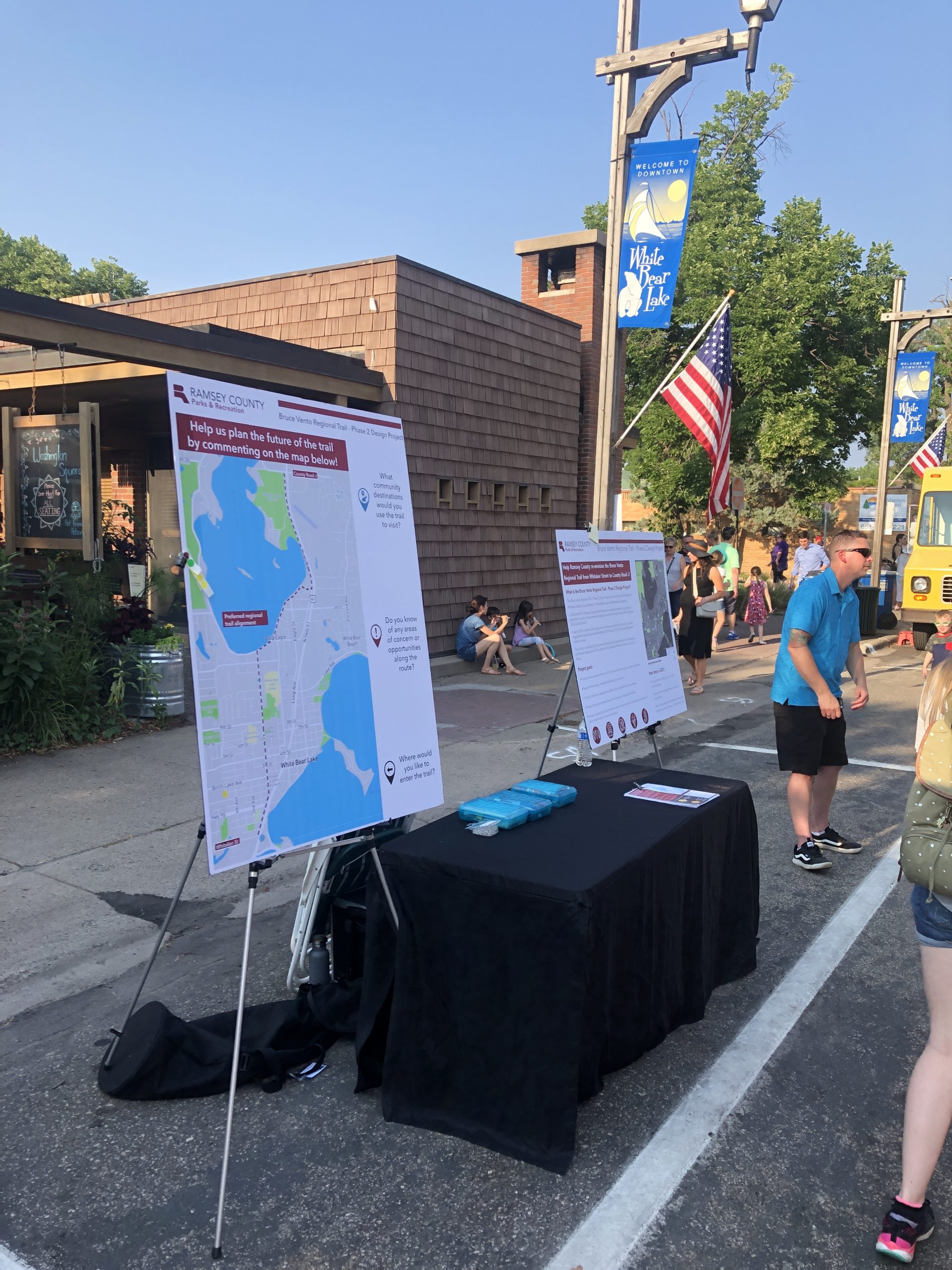Developed in collaboration with the City of Bloomington and the U.S. Fish and Wildlife Service, SRF designed a newly enhanced trailhead that welcomes visitors to the rehabilitated Old Cedar Avenue Bridge and the Minnesota River Valley Wildlife Refuge. This unique refuge, one of the few in the country near a metropolitan area, is a popular spot for birdwatchers, cyclists, hikers, and student field trips. SRF’s design overcame the challenges of building within the floodplain, providing new recreational access while preserving and enhancing the ecological systems of the area.
The historic truss bridge, spanning Long Meadow Lake, serves as a focal point offering sweeping views of the wetlands, adjacent bluffs, and the opportunity for activities like fishing. Once in disrepair, the bridge now links an extensive network of recreational trails, creating a key stopping point along the Mississippi Flyway. The rehabilitation project met the Secretary of the Interior’s standards for historic structures, including retrofitting the deck and railings to accommodate pedestrians and bicycles.
Visitors traveling down the bluff roadway, which includes a separated bicycle path, are greeted by twin entry signs made of Minnesota limestone, framing the view of the bridge. The redesigned parking area includes pedestrian paths lined with native plantings that lead to various destinations within the refuge. Playful limestone benches invite visitors to sit or climb, while the landscape architect carefully selected a pollinator-friendly plant palette, working with refuge managers to enhance the area around the shelter, seating areas, and bicycle gathering spaces.
Sitting atop a slightly elevated grade for flood protection, a new shelter and restroom building offer a gathering place at the refuge’s entrance, connected by accessible paths. From the shelter’s terrace, visitors enjoy views of the wetlands, floodplain forest, and the historic bridge. Wayfinding and interpretive signage guide visitors and highlight the cultural and natural resources of the site. Additionally, the project includes a nature play area and bird-viewing boardwalk, constructed by the U.S. Fish and Wildlife Service. After several phases of construction, the site reopened to the public in the spring of 2020.
Awards:
ASLA MN Award – General Design 2022
Resource links:
U.S. Fish and Wildlife Service
Minnesota River Valley Wildlife Refuge
Old Cedar Truss Bridge
More from:
Minneapolis, MN
Saint Paul, MN
